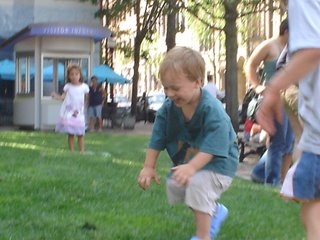Aligning Instruction to the New Mind
 Think about something that you do well. Now think about how you learned to do it. Chances are that you learned to do it without being aware that you were learning. This is called habit learning. How we conceptualize the world is a product of habit learning. How we write, speak, read, and listen are all habits reinforced over time. Technology is having a profound impact on habit learning. Digital experiences are changing the way we process information. In fact through habit learning these digital experiences are changing our brains. The time has come to align instruction not only with state standards, but to align instruction with the new brain. Failure to align instruction with the new brain will have devastating consequences in years to come. According to a recent article in The Sunday Times: ..the reason why some children today do not pay attention in school is that they find traditional teaching methods dull compared with their digital experiences. Instead, parameters are increasingly set by “wiki-thinking”, peer groups exchanging ideas through digital networks. Just as the online encyclopedia Wikipedia has been built from the collective knowledge of thousands of contributors, so digital natives draw on the experiences and advice of online communities to shape their interests and boundaries. A telling symptom is blogging. Where once schoolchildren and students confided only in diaries, no they write blogs or entries into MySpace.com—where anyone can see and comment on them. In the digital world students are learning how to sift through information in seconds. When they find information that they deem important they lock on to it. Sadly, it appears that students are discarding most of the information in classrooms. This is not a failure of intelligence; it is a failure of alignment. Teaching methods are not aligned with the new mind. Most classrooms today are overly reliant on traditional forms of instruction—students still sit in rows. Students still take notes from lectures. Students still complete worksheets. Instead of changing the way they teach, most teachers graft the latest technology on to older methodology. This is how the filmstrip of yesterday has become the PowerPoint of today. Some important observations about the digital native’s brain according to an advertising executive: It has rewired itself. It responds faster. It sifts out. It recalls less. Some important observations about the digital native’s brain according to a professor of human-computer interaction: Younger people sift more and filter more. We have more information to deal with, and we pay less attention to particular bits of information, so it may appear attention spans are shorter. But I don’t think attention spans are diminishing per se, if we find something engaging, then our attention span is just as long as it has always been The bottom line is that the educational delivery system is out of synch with how students process information. This disconnection appears to be the reason kids are tuning teachers and lessons out more and more. Clearly, students have acquired the habits of the digital age; teachers have not. The time has come to align instruction to the new mind. To embrace the emerging wiki-world our students already in-habit. |

Comments on "Aligning Instruction to the New Mind"
post a comment